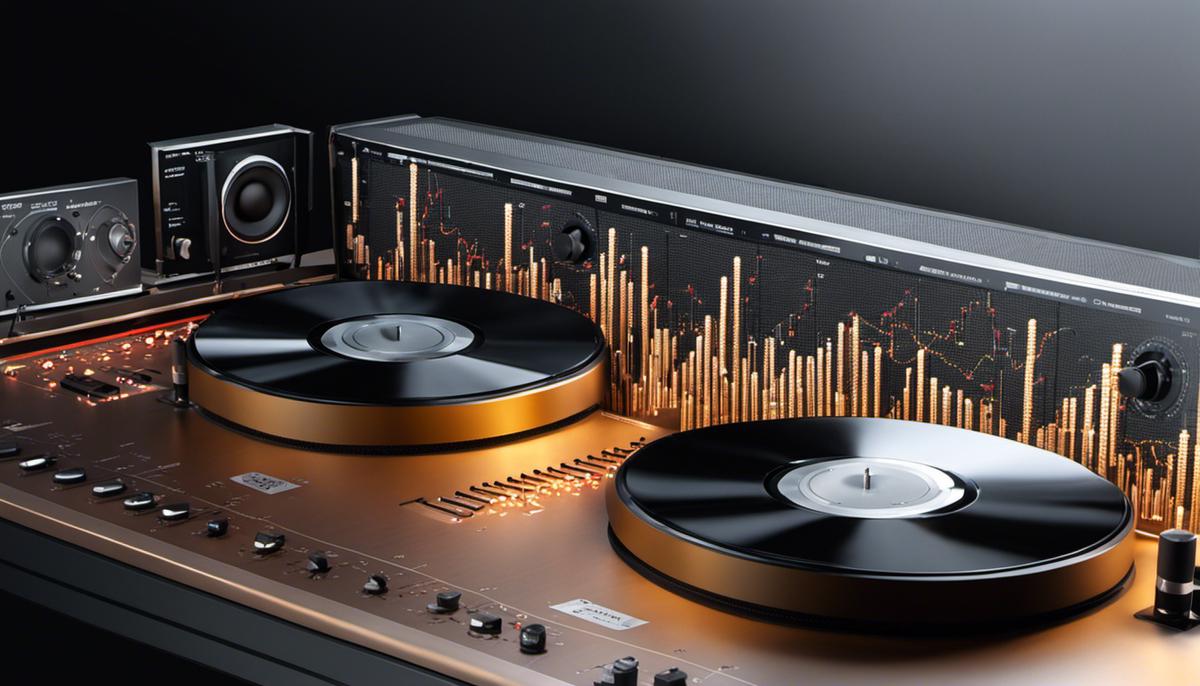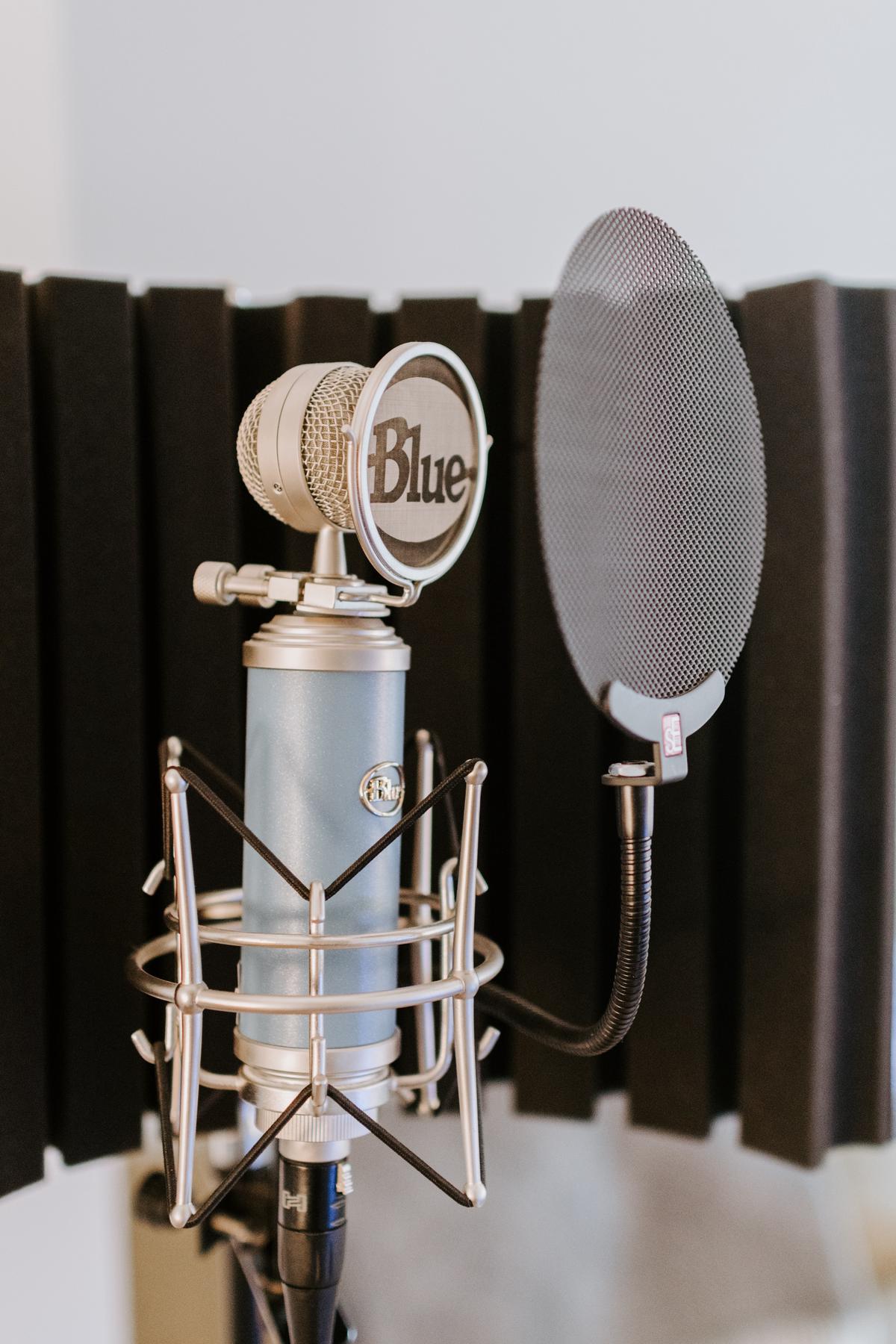In the world of audio optimization, mastering the art of speaker placement, monitor mixing, and troubleshooting calibration issues is paramount. The role of speaker placement goes beyond simply setting up audio equipment; it brings into play a delicate balancing act of acoustics, size, and position to optimize sound quality. With effective monitor mixing techniques, we can further refine the sound produced, ensuring a harmonious balance of volume levels, effective equalization, and appropriate use of effects. However, even in the best conditions, calibration problems may arise. These challenges need to be addressed to maintain the integrity of our sound system, and understanding their common causes and practical solutions is an invaluable skillset every audio enthusiast or hobbyist should have.
Understand Speaker Placement
The unmistakable beat of a drum. The resonating strum of a guitar. The captivating melody of a piano.
Music, in its myriad forms, has the transformative capacity to pull the heartstrings, ignite the imagination, and converge the sentiments of diverse beings into one shared experience. As though a grand symphony, speaker placement plays a pivotal role in shaping and perfecting the harmony that pours into our ears, turning an ordinary room into a veritable concert hall.
Picture this: you’re ensconced within the warm, welcoming embrace of a jazz café. The scandalous purr of the saxophone wraps around you, the rhythmic sway of the double bass dances promise by your feet, and the delicate patter of the piano engages in an intimate tête-à-tête with your heart. Such is the magic and beauty of proper speaker placement. By carefully orchestrating the positioning of these sonic ambassadors, streamlined sound paths are created, offering a vibrant and immersive musical experience – allowing sound to transcend from mere notes into pure emotion.
Every speaker plays a role, much like the musicians in our imaginary jazz ensemble. The bass, ardent and grounded, provides the ‘heartbeat’ to every song. In contrast, the treble, like the wistful whisper of a violin, carries the ‘voice’ of a melody. When these elements are disarrayed, the audio clarity gets lost, and the soulful narrative of the song is betrayed. Hence, speaker placement requires keen attention to detail and space acuity to succeed in striking that perfect balance between these musical contrasts.
Imagine your listening room as an artist’s canvas; vast, expansive, and eager to capture your aspiration. Placement near boundaries such as walls and corners can lead to bass ‘loading,’ essentially amplifying the lower frequencies, tipping the balance of the invigorating symphony that you aim to create. Equally crucial is the acoustic interplay between speakers and the natural reflectivity of the room. Neglecting this aspect can lead to an echo-laden audio, marring the musical clarity with unwanted reverberation.
The optimal togtherness of your speakers, or in audiophile parlance, ‘toeing in’ also plays a significant role in audible perfection. The ideal speaker angle forms a triangle with you, the listening destination. Misalignment of this auditory equation can cause phase issues and muddle stereo imaging, leading to a deceptively weak or skewed sound as opposed to an orchestra of audio delight.
Distance from the listener comes into play as well. This is much similar to attending a live concert where your experience immensely varies depending on whether you’re front row, middle, or at the back. Too close might heighten certain elements; too far may lessen the overall impact. Find the sweet spot: where the music envelops you, much like how an artist’s masterful brush strokes fill a canvas.
Rendering of speakers at high frequencies, like the intricate color patterns weaved by a rainbow, hinges on their height and orientation. Treble frequencies are highly directional, and misplacement can result in taking the zing out of the crispest notes. As a rule of thumb, tweeters should be at ear level for an optimal aural feast. Similarly, speaker stands and mounts aid in minimizing unwanted resonance and ensuring the most accurate sound reproduction.
In this world where music is the lifeblood of joy, camaraderie, and solace; the art, the science, and the magic of speaker placement is an unseen symphony maestro, choreographing the paths of melodies and rhythms into our hearts. Musical ecstasies are but a speaker’s placement away. So, let us embark upon this enchanting journey of perfect positioning, guided by the inextricable bond of love for sonorous symphonies and musical harmony. Let our hearts beat in tandem with every strum, every beat, and every note, enveloping us in the heartwarming cocoon of harmonious euphoria and aural delight.

Monitor Mixing Techniques
Stepping beyond the realm of the primordial importance of speaker placement, we venture into the realm of monitor mixing techniques. The crux of live audio, blending art and science, monitor mixing provides performers with accurate sonic reflections of their performance in real time.
At the heart of these techniques is the ability to balance input and output signals. It’s a sonic dance, made of subtle adjustments to volume, depth, and dimension. Mixing is an audible language of finesse – DJs, audio engineers, and musicians manipulate the optical fibers of sound to paint an immersive sensory escape.
The equalization process, or EQ, is a technique integral to monitor mixing. EQ shapes and molds the tonal quality of the sound before it reaches the speakers. By manipulating the amplitude of audio signals at particular frequencies, we can create lush, vibrant soundscapes— or strip sounds to their raw, undiluted forms. EQ is a brush of audio painting, caressing the canvas of silence with pigments of rhythm and harmony.
Next is the Gain structure, a significant player in the world of audio mixing. Adjusting gain allows for the maximization of signal strength while keeping distortion and noise to a minimum. Mastering gain is akin to harnessing the raw power of sound, tuning it into a potent symphony that respects the eardrum as much as it engages it.
Talking about monitor mixing without discussing feedback would be a disservice. The art of feedback management not only staves off unwanted audio disruptions but also preserves the integrity of the musical narrative. A good audio engineer can sculpt feedback like a potter shapes clay, turning potential disaster into creative opportunity.
The Panorama technique, representing the spatial depth in audio mix, is akin to casting a sonic holograph into listeners’ senses. Panning is the invisible architecture of sound that constructs a three-dimensional audio excursion.
Compressors are the iron-fisted guard dogs of monitor mixing. They ensure that no sound peaks go rogue, influencing the dynamic range of audio output. Wielding a compressor is like breeze guiding the leaves – it’s gentle, steadying yet transformative.
By mastering these techniques, the monitor mixing maestro choreographs a dance of decibels and frequencies. Their audio tapestry weaves music into air, whispering tales of melody and rhythm that embrace and intoxicate listeners. The process, much like the passionate dégustation of headphones or festival hopping, is an immersive tactile plunge into the heart of music.
In the end, the key techniques used in monitor mixing are not just tools; they’re the strings of an invisible harp, playing the symphony of our perception. From the subtle notch of an EQ to the firm hand of compression, each technique is a verse in the poetic language of sound. The result? A vibrant, aural celebration spinning on the axis of harmony and rhythm, resonating warmly in our hearts.

Troubleshooting Calibration Problems
A love for music, in all its splendor and quirkiness, carries a resonance that extends past the mere art of listening. It fosters a ceaseless quest for mastery and integrity within the realms of expanded auditory experiences. And as our journey delves into the confluence of art and science that defines audio technology, we grapple with challenges that stray our soundscape from its absolute brilliance – among these, speaker calibration issues.
Speaker calibration is the fine-tuning tool that refines and perfects our auditory experience. It lies in its ability to sculpt the raw power of sound with precision, transforming the listening space into a conduit for musical symphonies to express their truest self. Calibrating speakers, therefore, is not merely a technical endeavor, but a poetic pursuit to connect deeper with the symphony of the universe.
When subtle but unnerving hollowness cloaks your music, or a muddying distortion veils its clarity, common speaker calibration issues are often at play. Identifying and resolving these issues is akin to treating a symphony with a fine comb, shaping strands of undulating harmony into a coherent & emotional narrative that talks directly to your soul.
If unfavorable resonance is robbing your music of its naturalness, it’s crucial to recalibrate by seeking out the source and adjusting accordingly. Sometimes, it lies in the operator error, perhaps inadvertently placed volume controls causing overdriven inputs or unbalanced output levels. In such cases, rectifying the error is as simple as mastering the finesse of in-sync volume adjustments.
A balanced live audio experience is as much art as it is a science. Leveraging monitor mixing techniques to ensure that each instrument and voice retains its distinct signature while contributing to the musical narrative becomes essential. Balancing input and output signals by checking levels and adjusting volumes throughout the performance, focusing on the role each sound plays in the mix, can deliver a live sound that is well-contoured and potent.
Perhaps the speakers are producing unbearable feedback, characterized by howling or shrieking sounds. This problem can be averted by directing your microphone away from the speakers, adjusting your personal hearing aids, or even using a directional microphone.
And then there’s the ubiquitous equalization (EQ). Important to note is the vitality of a well-mastered EQ – it’s like the conductor of your musical symphony, overseeing and enhancing every nuance. When the EQ balance is off, it’s like a symphony orchestra playing wildly out of sync, squandering the potential for a unified and harmonious performance. But fear not, adjusting the EQ is a straightforward way to resolve common calibration issues, bring out the richness and depth of different tones, and facilitate an immersive connection.
Next, the gain structure needs attention if your sound seems to be consistently distorted or overly weak. This aspect of calibration requires adjusting the strength of your signal to ensure optimal transmission without distortion, the great enemy of a well-rounded acoustic experience. Another fundamental feature to inspect is compression, which can control sound peaks and expand dynamic range.
Music is also about space, and the panorama technique is a key to unlocking the beauty of spatial depth. By adjusting the stereo field, it’s possible to enhance the listening experience by simulating a real live setting and creating a wide sound image.
Calibrating speakers, in essence, is a dance of fine adjustments, each contributing to the creation of a balanced, vibrant and emotionally resonant soundscape. It marries the technical with the artistic, the tangible with the ethereal, the notes with the silence quite like a symphony – an unseen maestro creating magic in the midst of chaos. With patience and care, it’s possible to rectify even the most tenacious of calibration issues and build a sonic sanctuary where music can spread its wings and fly.

Photo by kellysikkema on Unsplash
The journey of becoming an adept hand in speaker placement, monitor mixing, and troubleshooting calibration problems is far from an easy task. It requires dedication, a keen ear for detail, and an insatiable hunger for continuous learning. However, when accomplished, these skills can make a world of difference in sound production and quality. By fully comprehending your room’s acoustics, mastering how to balance volume and manage equalization, and becoming proficient in rectifying common calibration issues, you stand to gain not only an improved audio output but also an enriching journey into the complexity and beauty of sound.

Comments.
Currently there are no comments related to this article. You have a special honor to be the first commenter. Thanks!